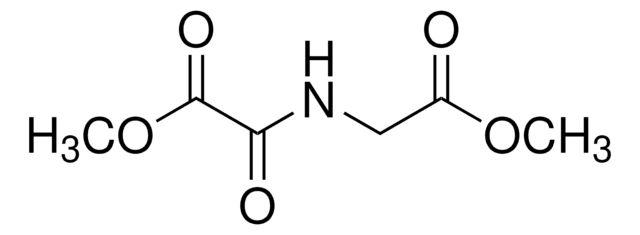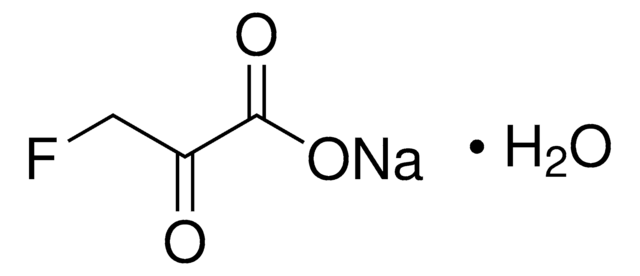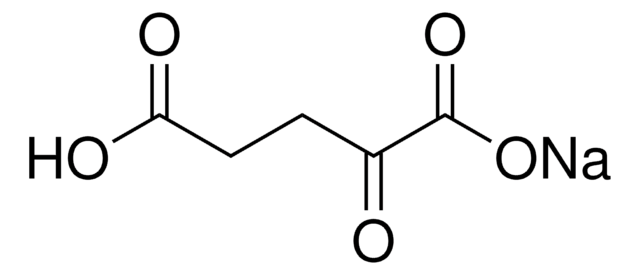O9390
N-Oxalylglycine
≥98% (HPLC)
About This Item
Empfohlene Produkte
Assay
≥98% (HPLC)
Form
solid
Lagerbedingungen
desiccated
Löslichkeit
deionized water: >10 mg/mL
Lagertemp.
2-8°C
SMILES String
OC(=O)CNC(=O)C(O)=O
InChI
1S/C4H5NO5/c6-2(7)1-5-3(8)4(9)10/h1H2,(H,5,8)(H,6,7)(H,9,10)
InChIKey
BIMZLRFONYSTPT-UHFFFAOYSA-N
Biochem./physiol. Wirkung
Leistungsmerkmale und Vorteile
Signalwort
Warning
H-Sätze
Gefahreneinstufungen
Acute Tox. 4 Oral
Lagerklassenschlüssel
11 - Combustible Solids
WGK
WGK 3
Flammpunkt (°F)
Not applicable
Flammpunkt (°C)
Not applicable
Analysenzertifikate (COA)
Suchen Sie nach Analysenzertifikate (COA), indem Sie die Lot-/Chargennummer des Produkts eingeben. Lot- und Chargennummern sind auf dem Produktetikett hinter den Wörtern ‘Lot’ oder ‘Batch’ (Lot oder Charge) zu finden.
Besitzen Sie dieses Produkt bereits?
In der Dokumentenbibliothek finden Sie die Dokumentation zu den Produkten, die Sie kürzlich erworben haben.
Kunden haben sich ebenfalls angesehen
Artikel
Glutamine's role in neurotransmitter synthesis and transport highlights its importance in neuronal function and glutamate production.
DISCOVER Bioactive Small Molecules for Neuroscience
We offer a variety of small molecule research tools, such as transcription factor modulators, inhibitors of chromatin modifying enzymes, and agonists/antagonists for target identification and validation in gene regulation research; a selection of these research tools is shown below.
Unser Team von Wissenschaftlern verfügt über Erfahrung in allen Forschungsbereichen einschließlich Life Science, Materialwissenschaften, chemischer Synthese, Chromatographie, Analytik und vielen mehr..
Setzen Sie sich mit dem technischen Dienst in Verbindung.











